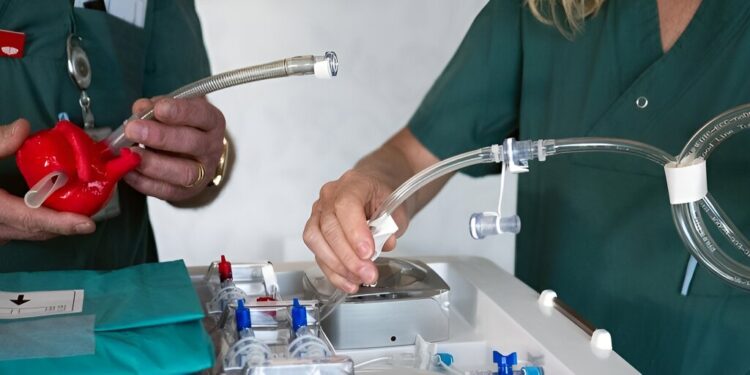Credits: Jakob Lundberg
The risk of early heart failure after a heart transplant is lower if the donor heart is stored in a heart box rather than in the usual cooler with ice, according to a study by researchers at the University of Gothenburg.
The method of preserving donated hearts before transplantation is to keep them at 4° in a potassium solution in a cooler with ice. The handling is a race against time, where compatibility, transport and operation must take place within four hours to avoid increasing the risk of complications for the recipient.
Research has shown that transport times of up to nine hours are no longer a barrier if hypothermic oxygen perfusion (HOPE) or a “heart in a box” is used instead of static cold storage. In the box, the heart is kept at 8° and is oxygenated using a pump, a set of tubes, a reservoir and fluid that circulates through the resting heart while awaiting transplantation.
The aim of the current study, published in The LancetThe aim of this study was to compare the heart-in-the-box and cooler methods in terms of safety and health outcomes for heart recipients during the first 30 days after transplantation. This is the first randomized controlled study of its kind.
Eight countries in Europe
The study involved 204 adult patients listed for heart transplantation at 15 different clinics in eight European countries. Half of the participants were randomly assigned to receive hearts manipulated in a “heart box,” while the other half received hearts stored in cold static storage according to standard procedures. All hearts came from brain-dead donors.
The results showed that heart recipients were significantly less likely to suffer heart failure in their new heart if it had been handled in a ‘heart-in-a-box’ before transplantation, compared with standard cold static storage. The risk of serious organ failure, primary graft dysfunction (PGD), was 11% in the heart-in-a-box group and 28% in those whose hearts had been stored according to standard practice.
Otherwise, no differences were observed between groups regarding clinical events during the follow-up period. The researchers will present analyses of participants’ health outcomes during the first year after heart transplantation at a later date.
One of the driving forces behind the study is author Andreas Wallinder, MD, PhD, a cardiothoracic surgeon and now chief medical officer of the Swedish company XVIVO AB, who, together with Stig Steen, senior professor at Lund University, developed the “heart in a box” concept used.
“The oxygenation of the heart that occurs in the box is crucial. During normal cold storage and transport, we don’t have oxygenation or circulation to the cells, but when we use the box, oxygenated, nutrient-rich fluid is continually pumped through the heart, which allows the heart to function better and leads to fewer complications in the recipient after transplantation,” he explains.
More transplants on the horizon
Göran Dellgren is professor of transplant surgery at Sahlgrenska Academy, University of Gothenburg, cardiothoracic surgeon at Sahlgrenska University Hospital, and Swedish principal investigator of the study, responsible for about 20 participants. “The results represent a major breakthrough in the field of transplantation, which could expand the field.”
“Used correctly, the heart in a box can reduce a number of complications that otherwise often result in suffering, poor outcomes, in the worst cases, premature death and also high costs. In terms of time, organs can also be transported over longer distances, allowing more organs to be available for transplantation.
“It’s also likely that we may start to use less ideal organs from older donors, which could increase the number of heart transplants,” he says.
More information:
Filip Rega et al., Hypothermic oxygenated perfusion of the donor heart during heart transplantation: short-term results of a randomized, controlled, open-label, multicenter clinical trial, The Lancet (2024). DOI: 10.1016/S0140-6736(24)01078-X
Provided by the University of Gothenburg
Quote:Better transplants with ‘heart in a box’: Study finds method reduces risk of early heart failure (2024, August 16) retrieved August 16, 2024 from
This document is subject to copyright. Apart from any fair dealing for the purpose of private study or research, no part may be reproduced without written permission. The content is provided for informational purposes only.



